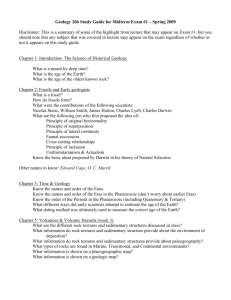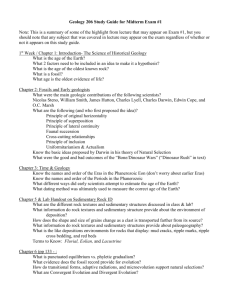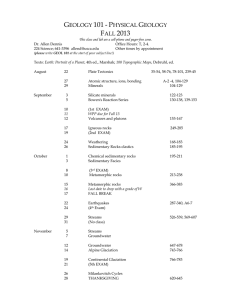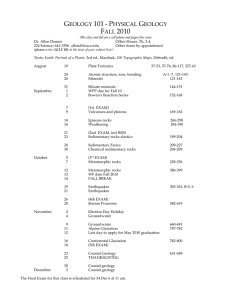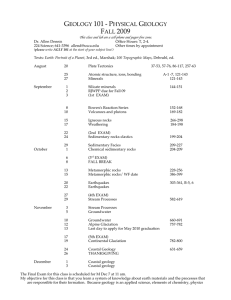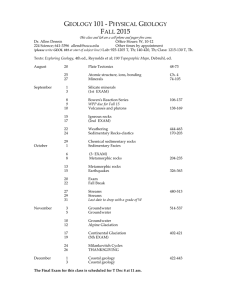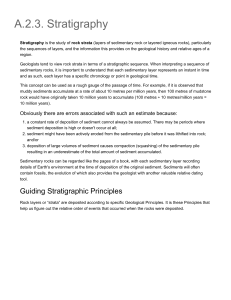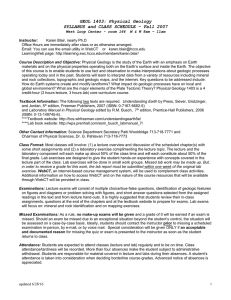Relative Dating Powerpoint
advertisement
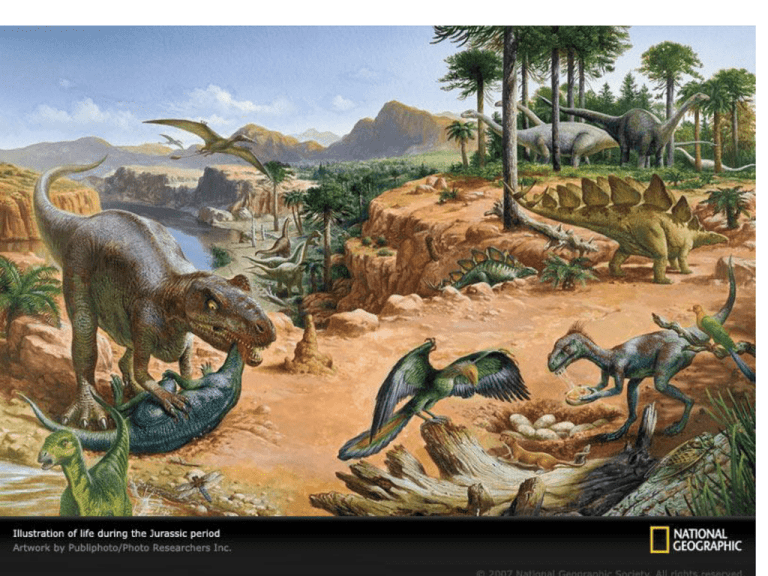
Sir Charles Lyell Time and Geology Image source: www.mnsu.edu/emuseum The Key to the Past Relative Time- “this rock is older than that” Principles Used to Determine Relative Age • Unconformities • Correlation • The Standard Geologic Time Scale • Index Fossils Absolute Time- “this rock is 28 million years old” Principles of radioactive decay • Instruments • The age of the Earth Important Figures in Geologic Time • James Hutton (1726-1797): Native of Edinburgh, Scotland. Father of modern Geology. Published “Theory of the Earth” in 1785 in which he outlined that geological features and ancient rocks could be explained by present-day physical and chemical processes. • Charles Lyell (1797-1875): Rebelled against prevailing thought, which was rooted in Biblical interpretation and Catastrophism. His main contribution was the development of Uniformitarianism (Actualism). present is the key to the past…” • “The Modern view holds that processes that operate today have shaped the Earth through Geological Time, but rates may not have always remained constant. Important Relative Age Dating Principles • Original Horizontality: all beds originally deposited in water formed close to horizontal Superposition: within a sequence of undisturbed sedimentary or volcanic rocks, layers become younger, upward Lateral Continuity: original sedimentary layers extend laterally until it thins out at edges rocks that are otherwise similar, but are now separated by a valley or other erosional feature, can be assumed to be originally continuous. Cross-cutting Relationships: disruptions in any rock sequence occurred after the youngest established event in the undisturbed sequence Ie. A rock or fault is younger than any rock (or fault) through which it cuts Sedimentary Deposition Intrusion Tilting & Erosion Subsidence and New Marine Deposition Missing Formation Dike Event Erosion and Exposure Subsidence & Deposition Fluvial Deposition Complex Subsurface Geology Contact Relations




